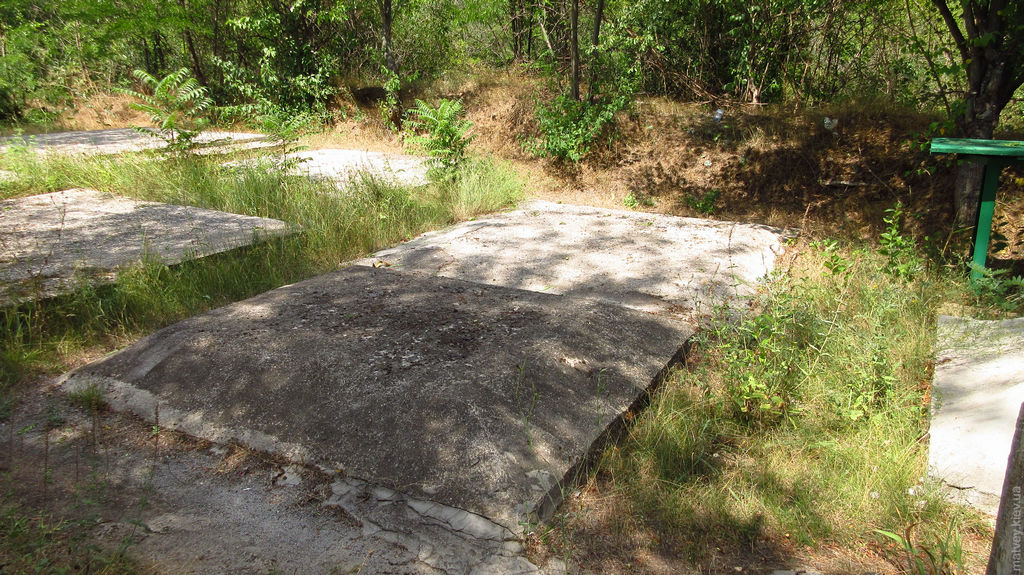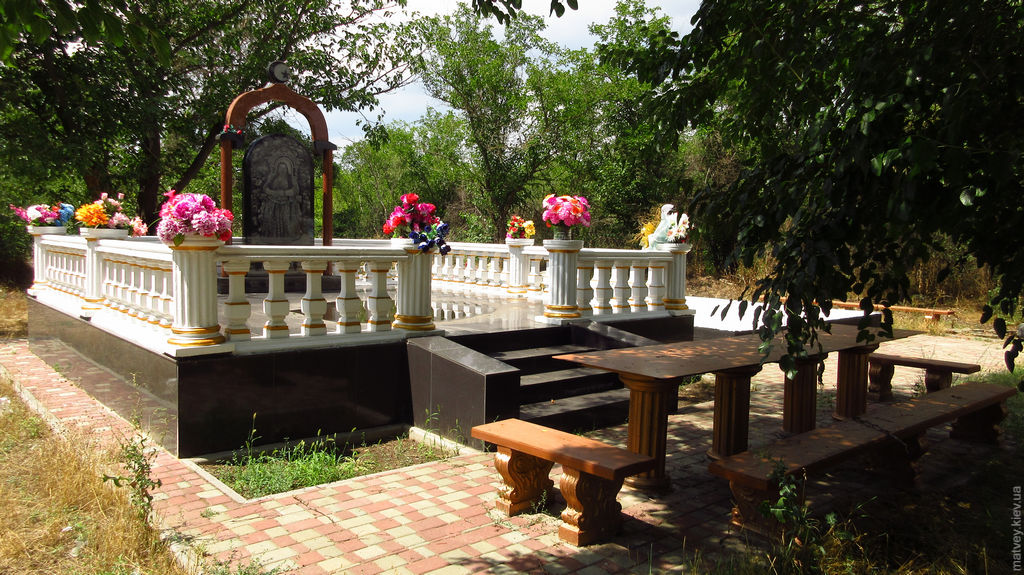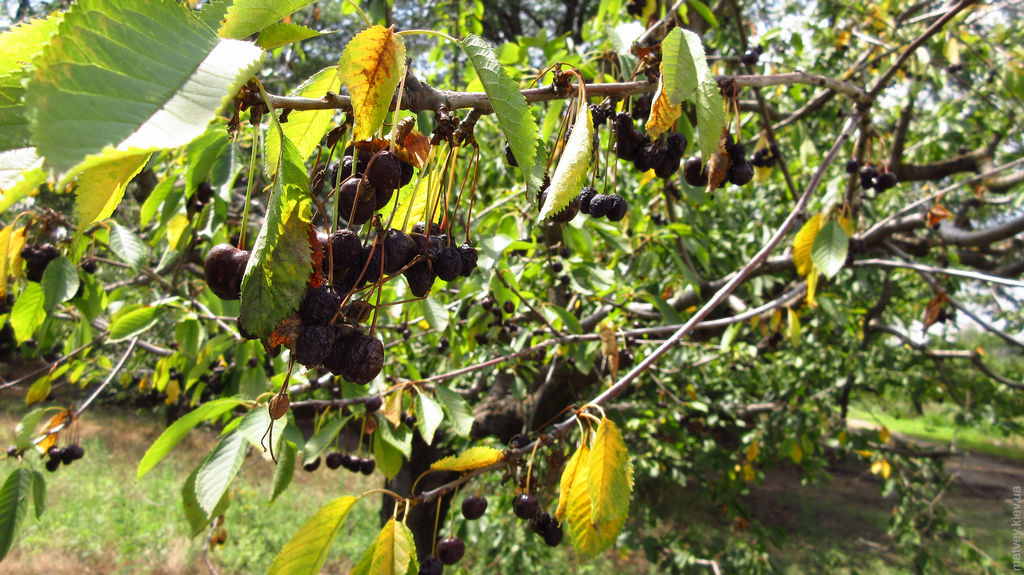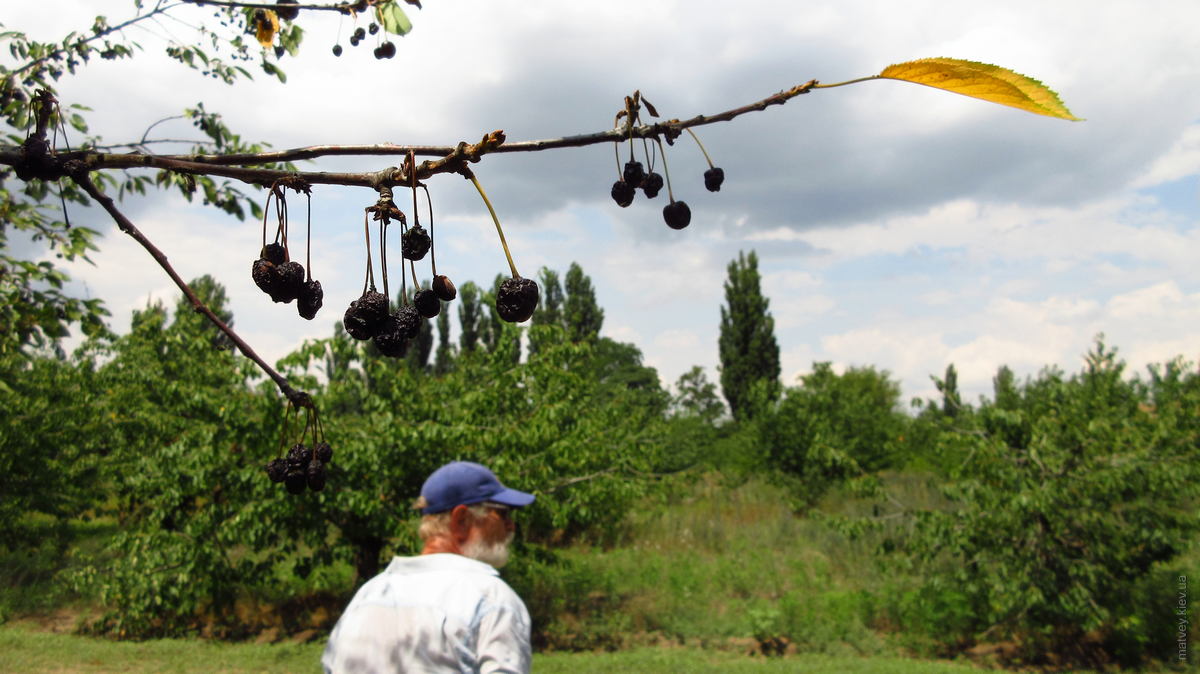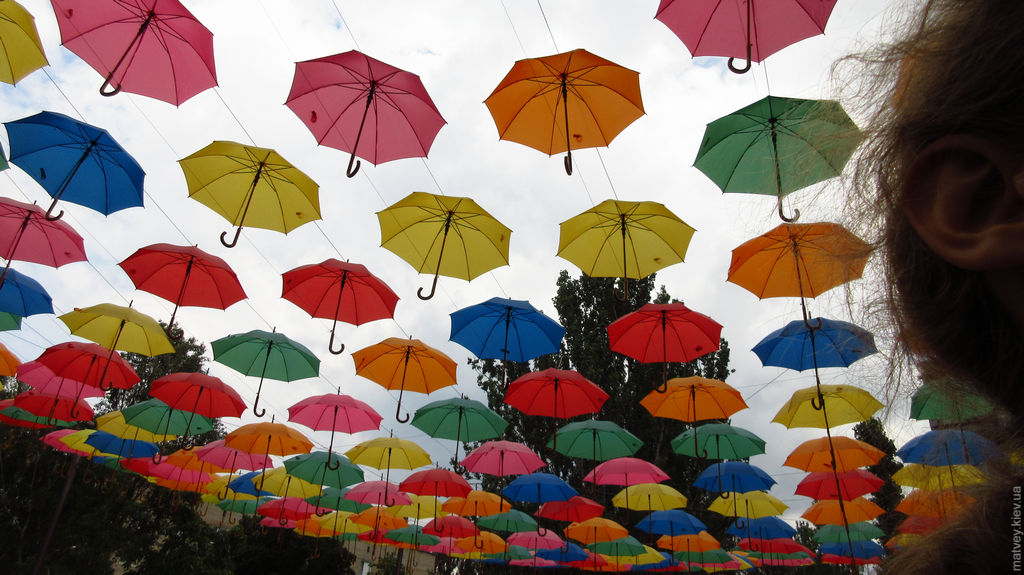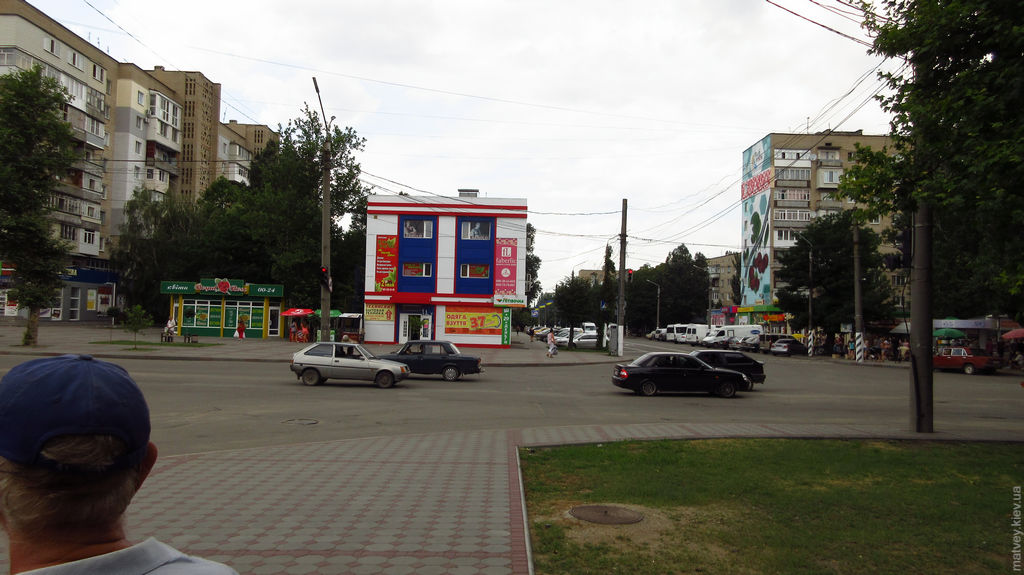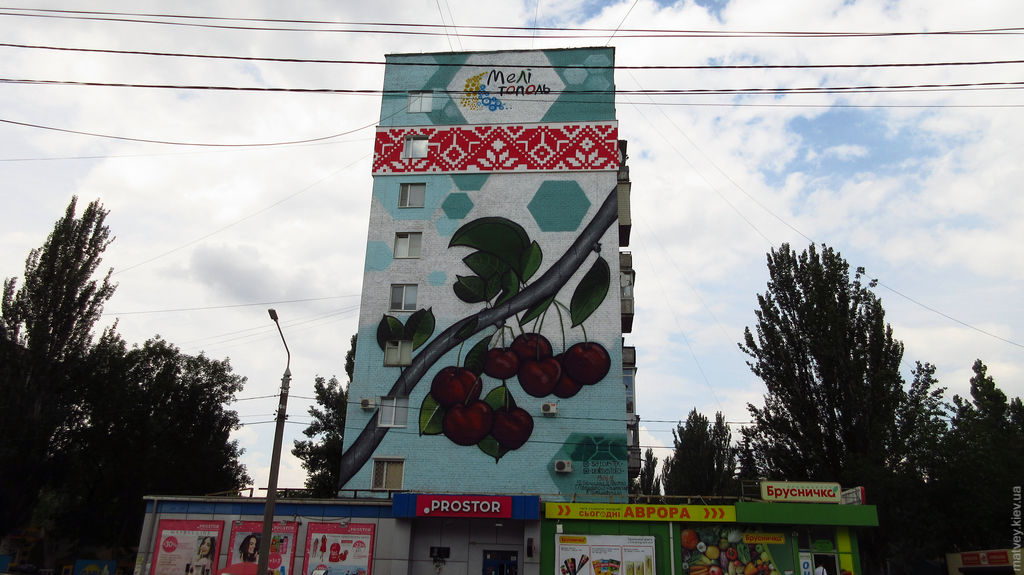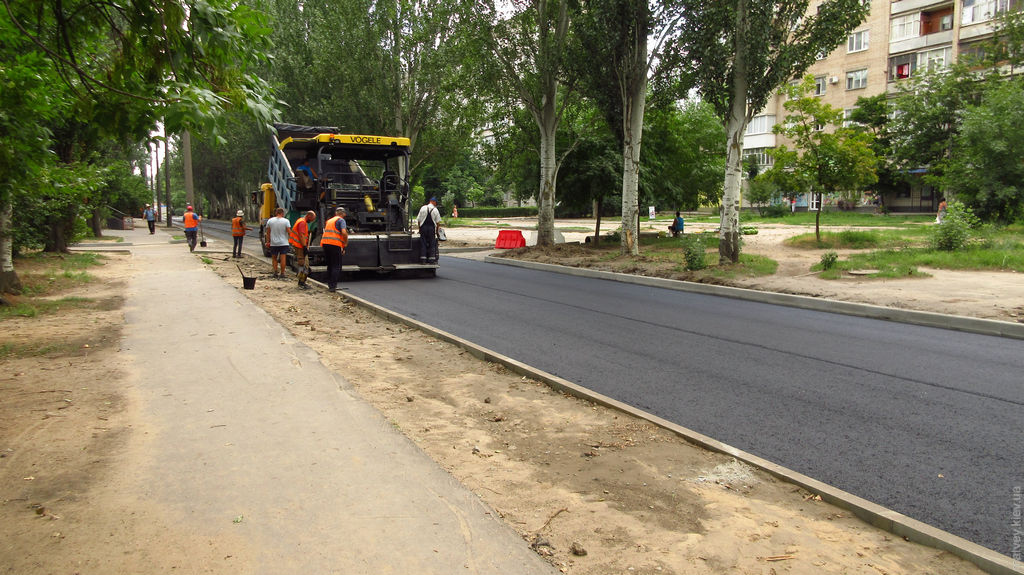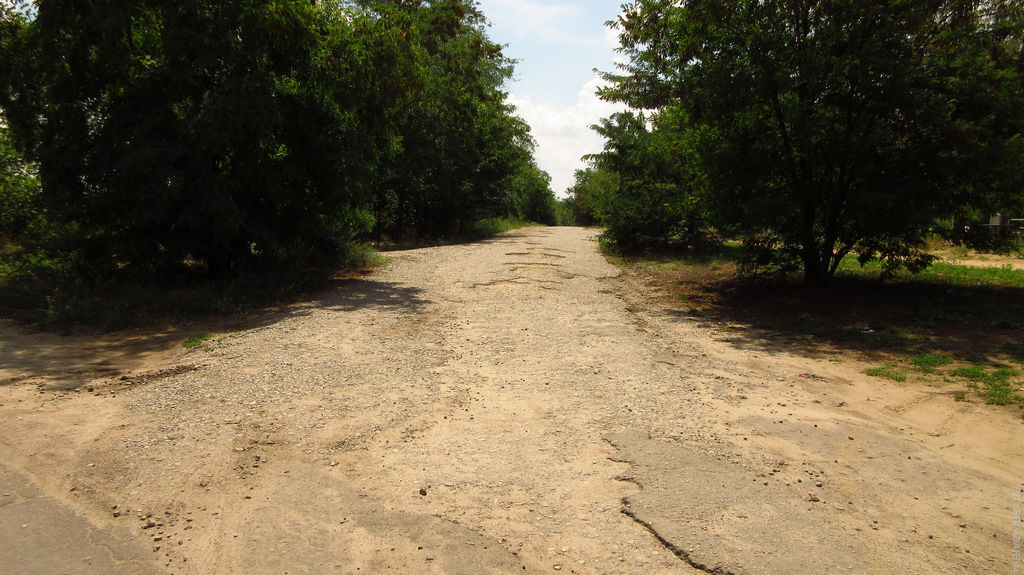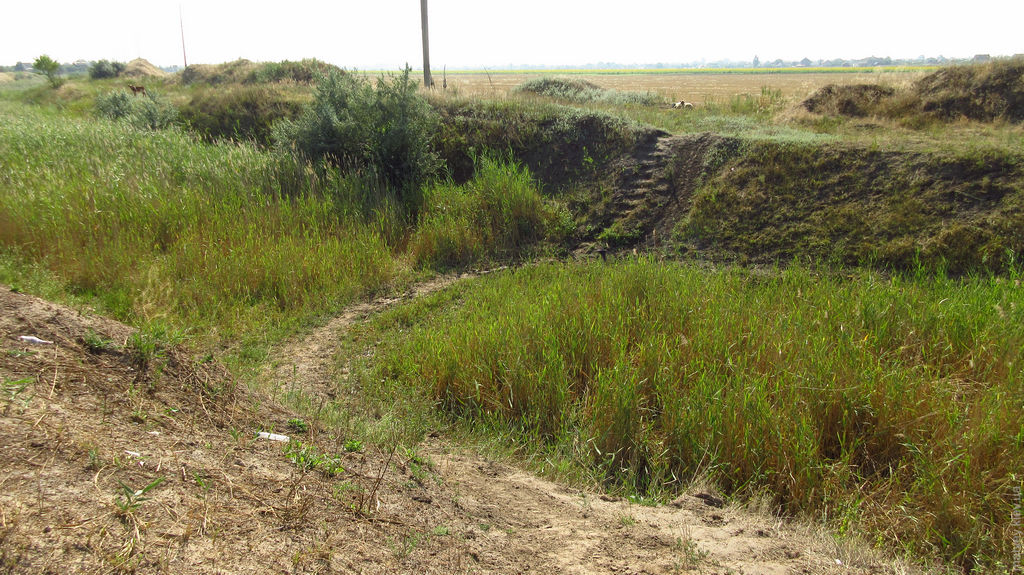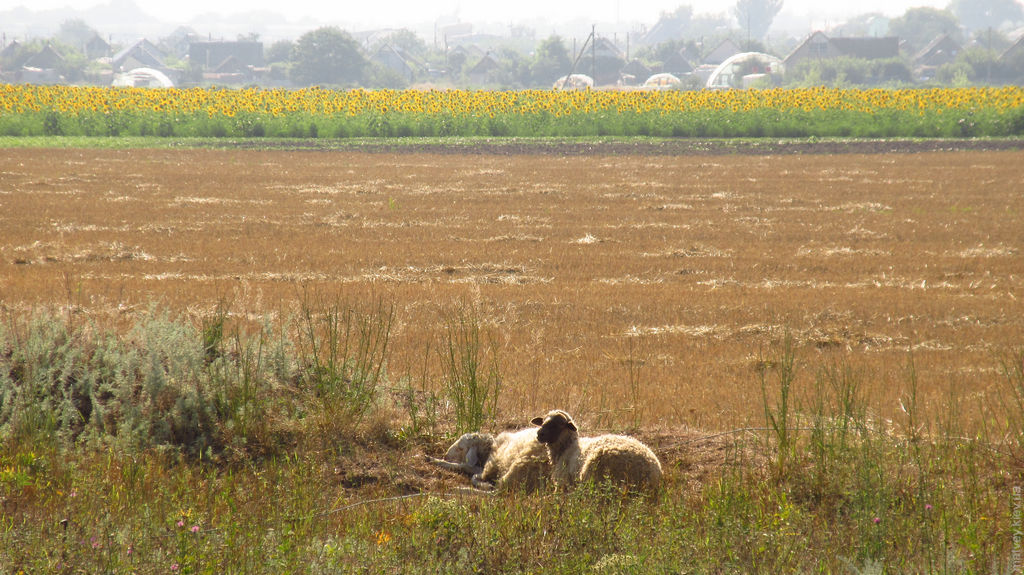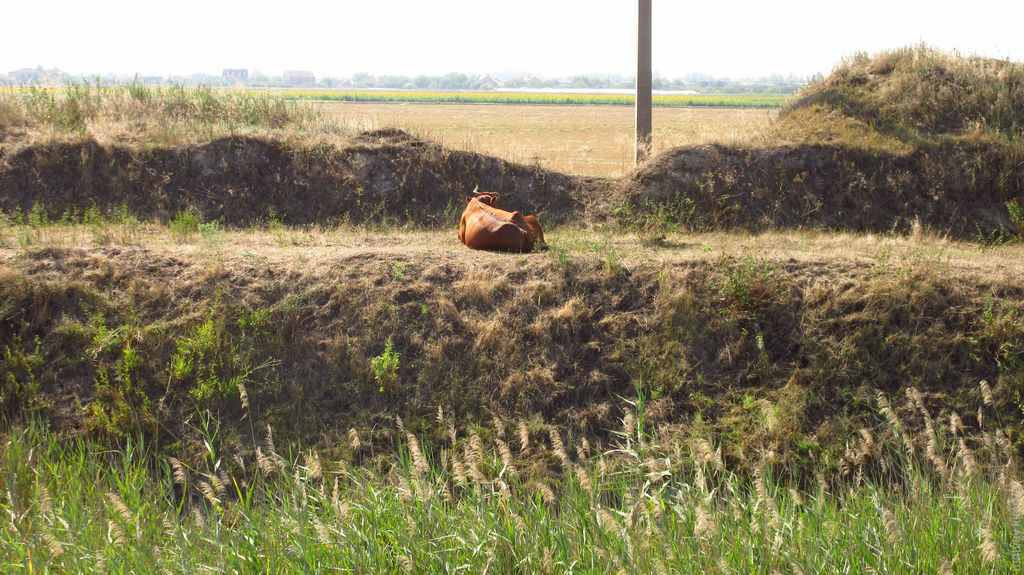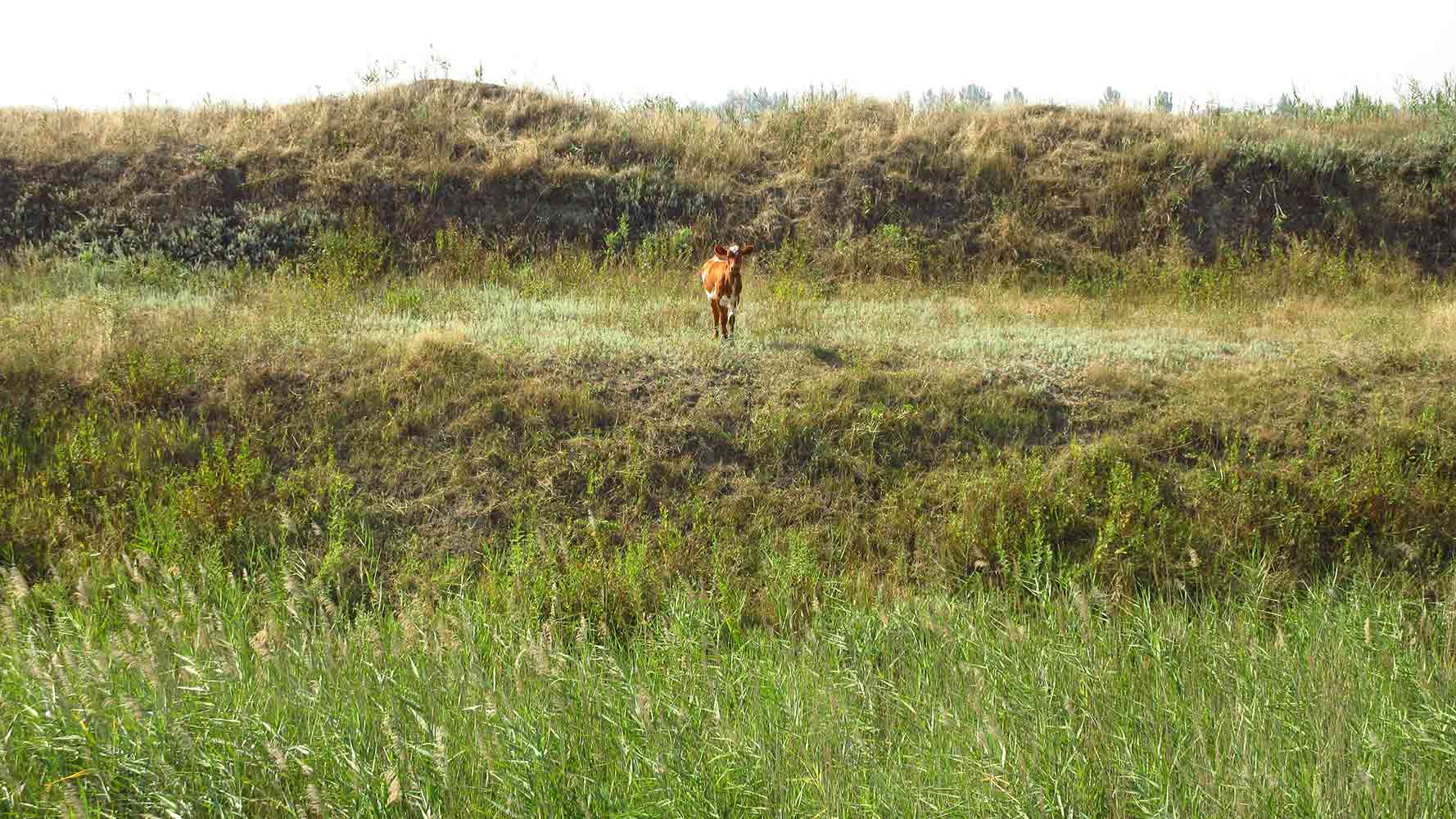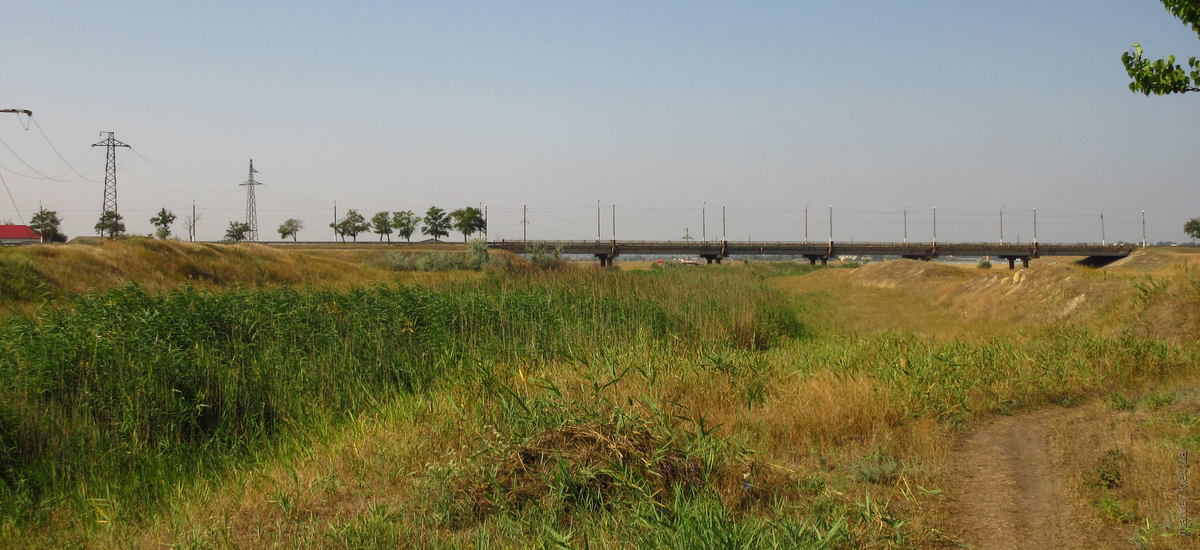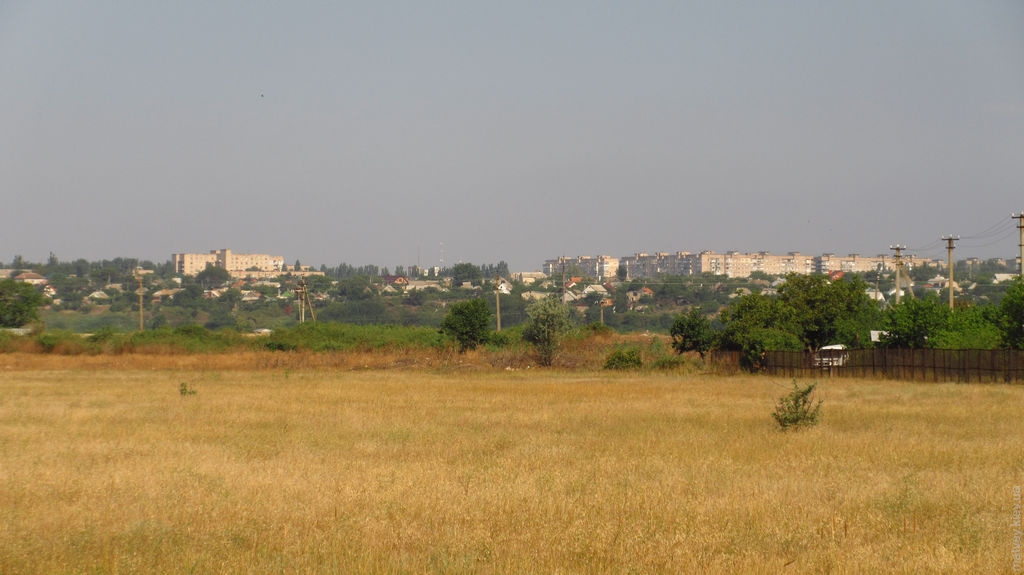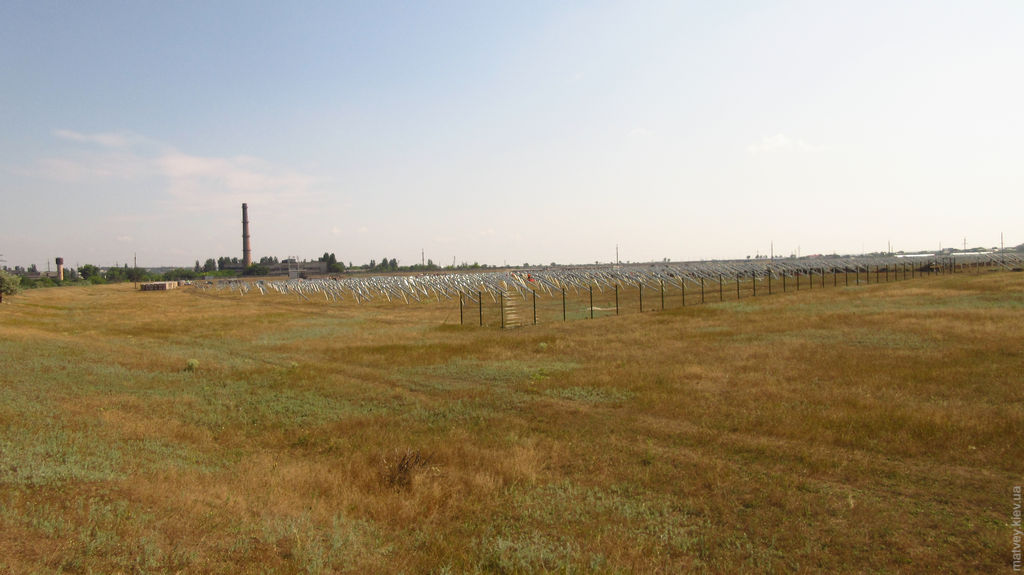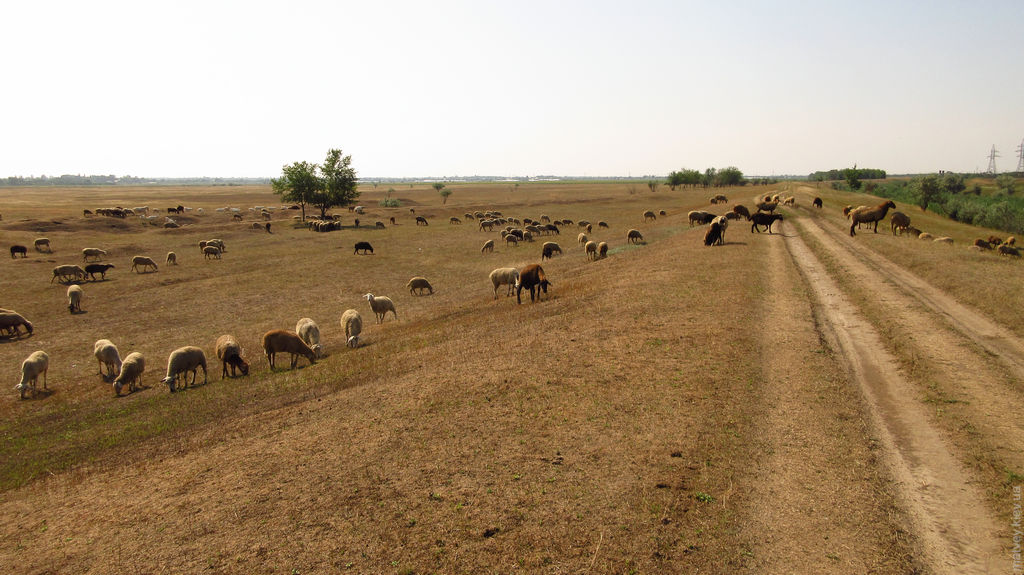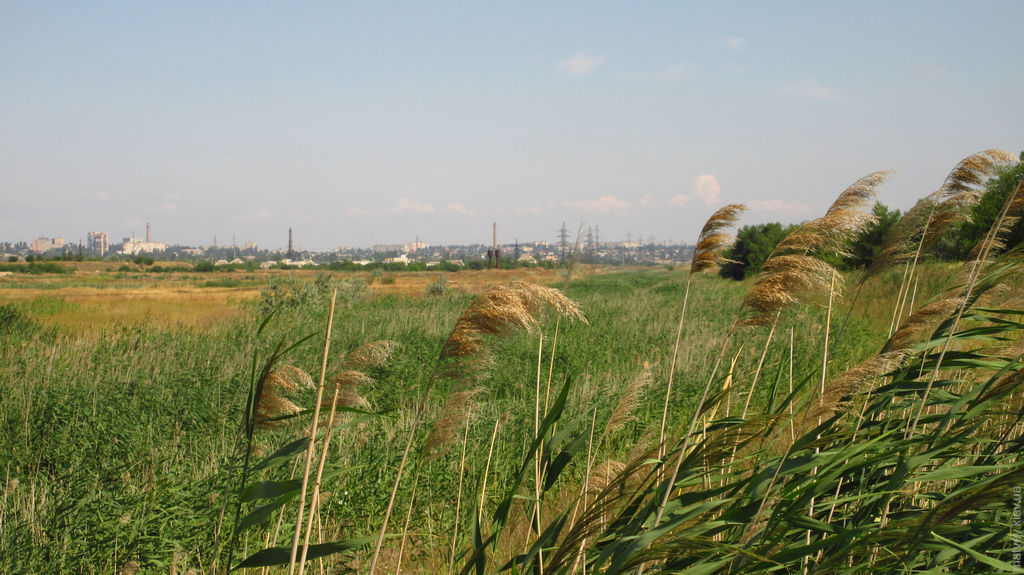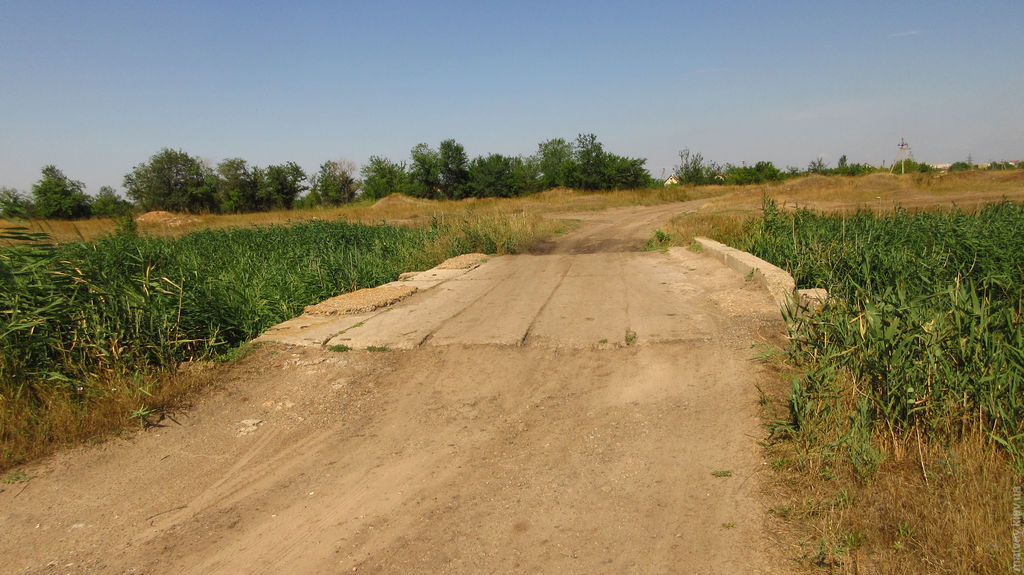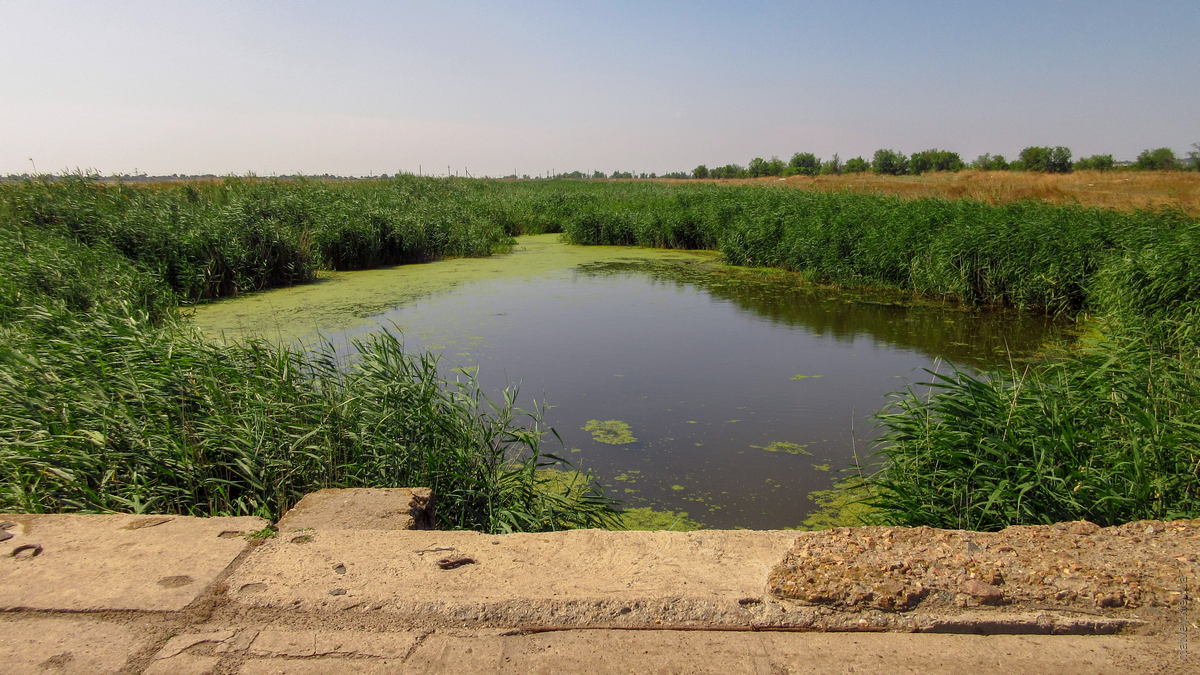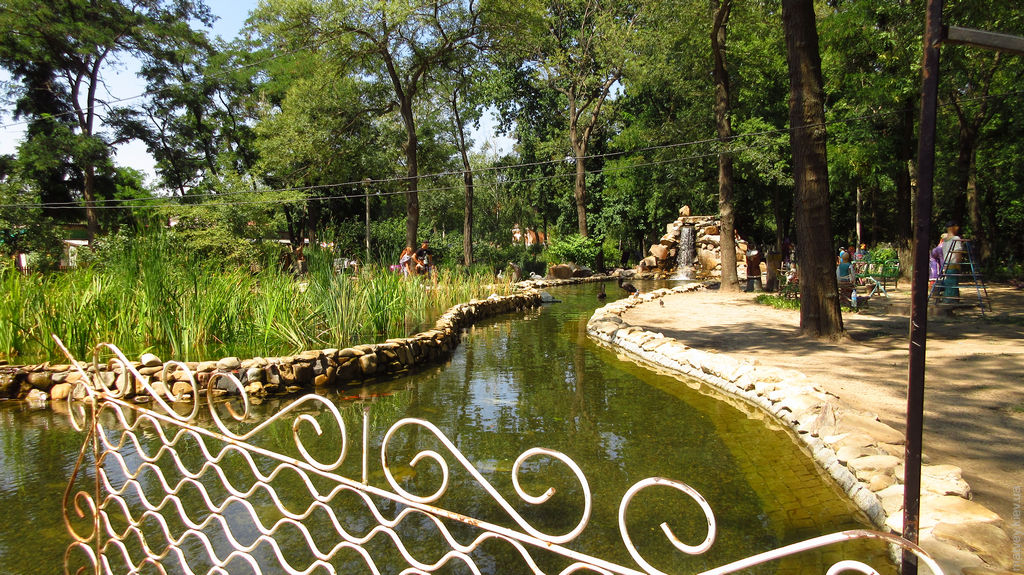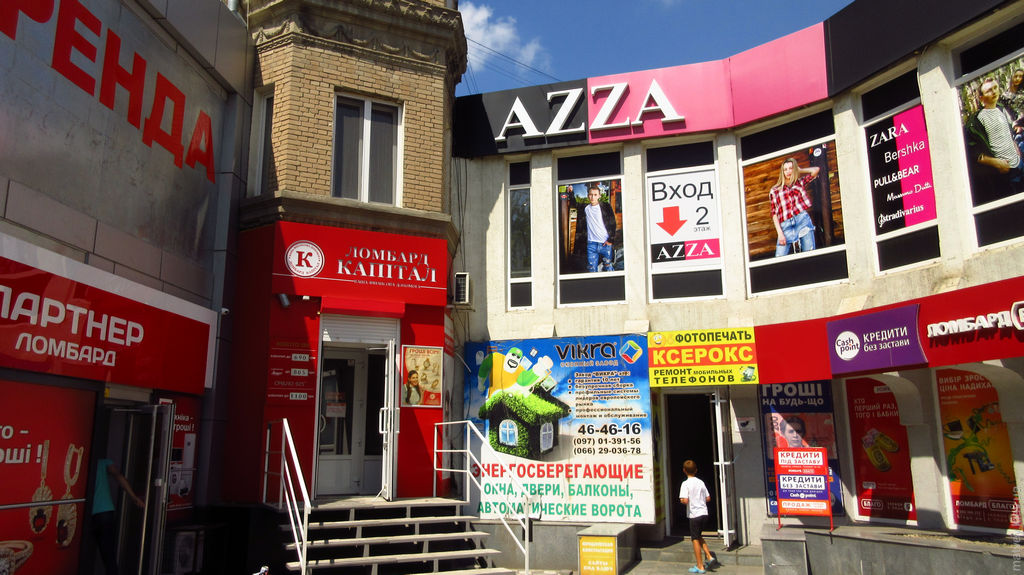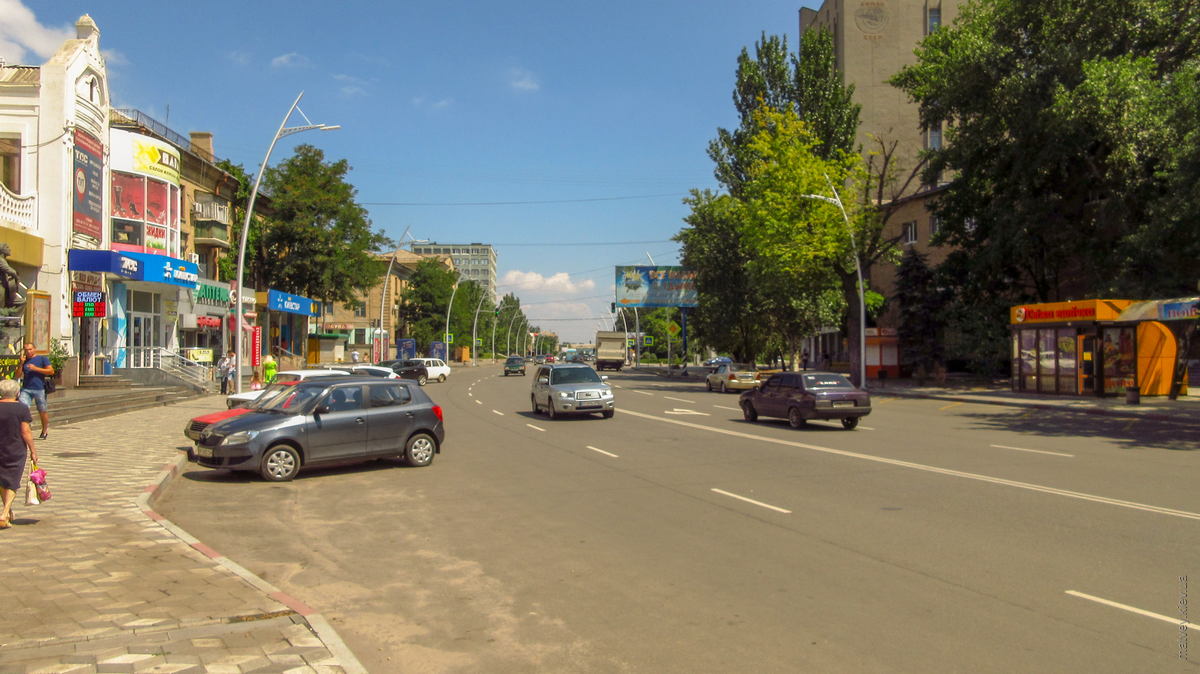A town having people of many ethnicities, Melitopol has many styles of graves. I've shown karaim and jewish styles in my other story about this place, and here is one more style — the one that Romani people are accustomed to. Here's an undecorated grave — just a rectangular concrete base:
and here's a full-fledged one. Both photos were taken on Semenivske cemetery.
Am I done with graves? I seriously hope so.
Strangely, some cherries have been left uncollected in a section of the Korvatsky garden. It was half sun-dried right from the tree. It tasted good.
Umbrellas were installed over a square in the beginning of Brive-La-Gaillarde street to create a photo zone.
🛈 Brive-La-Gaillarde is one of Melitopol's sister cities.
Architecture hadn't been a priority when this abomination was erected — it had been built with only business in mind.
A mural having a strange, cold color palette.
Road pavement was being renovated in some places,
while other, less central places were still in the queue for that (in best case).
This was a man-made channel, straightening and draining the Molochna river. It was dry in its upstream part, probably having already fulfilled its purpose and disused.
People were using the channel as a calm pasture for their cattle.
Road E58 was crossing this channel on a low bridge. Prymorsk and Berdyanks are to the left, Melitopol edge is to the right on this photo.
A portion of the upper part of Melitopol could be seen from our route.
A solar power plant was being built on the field between the Molochna river and Kostyantynivka village. There has been a lot of sunny days in the year here, and the climate change was only incrementing that number.
That was a lot of sheep! I haven't seen so many during my whole childhood.
Another portion of Melitopol was visible, with common reed (Phragmites australis) of Molochna river on the foreground.
We reached and crossed this bridge on a side track road between Melitopol and Kostyantynivka.
Someone rich sponsored the creation of a new pond in the central park of the town.
This place of high visual pollution was proving that business was way more important than architecture.
The city boasted its new lantern poles in the central part.
